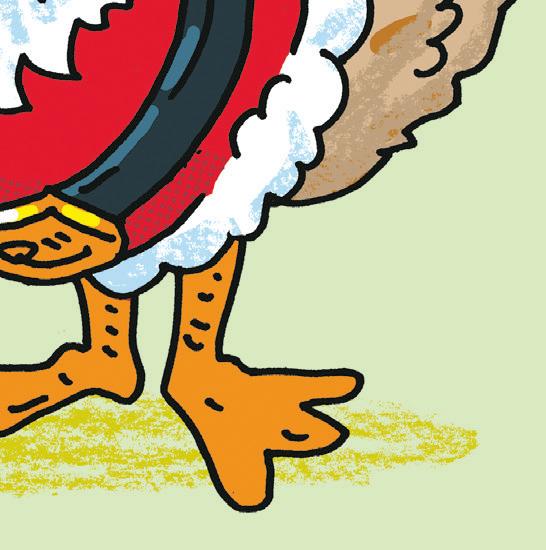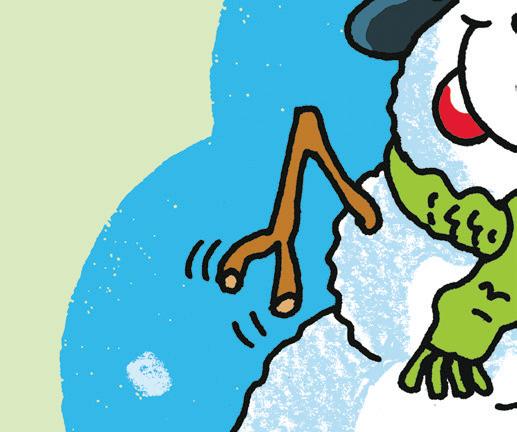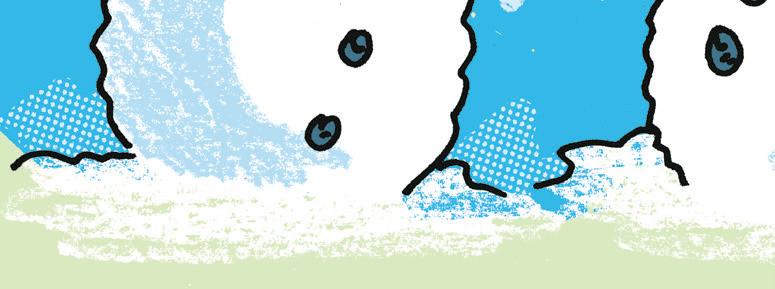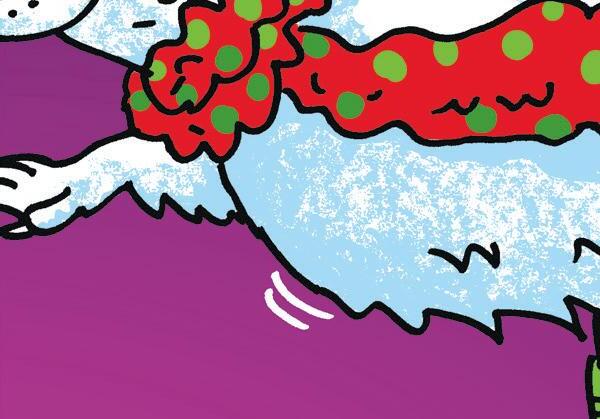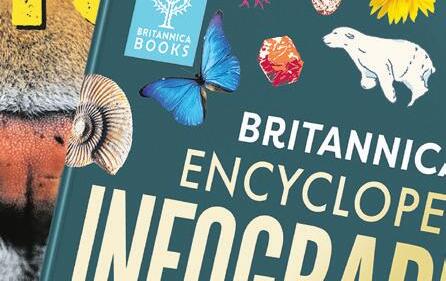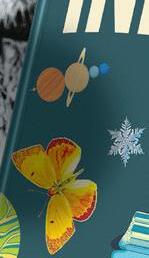


















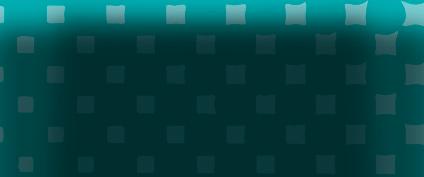





















































The brain is the most amazing and mysterious organ of the human body. Here – with the help of our expert guide, Dr Brain – you can nd out more about your brain and how it works.
The human brain is the most complex thing in the known universe. Did you know, for example, that the human brain contains as many as 86 billion neurons, or nerve cells? Or that there can be as many as 1 billion connections between the neurons in a piece of brain tissue the size of a grain of sand?
So why is the brain such a powerful and complicated organ? The answer is that it is the body’s control centre. As part of your central nervous system, it receives and makes sense of signals sent from nerve cells in the rest of the body. It sends information to the body’s muscles and organs. It controls a person’s thoughts and
WHAT ARE NEURONS?
Neurons are the information carriers inside your brain. Each neuron consists of a cell body with branching structures that extend from the cell body like the branches of a tree. The average neuron is connected to 1,000 or more other cells through a network of axons and dendrites, which send and receive messages. The diagram on the left shows three different types of neuron. Neurons transmit information within the brain and between the brain and the rest of the body. The networks in your brain constantly change as you grow and learn.
feelings, allowing them to make sense of the world. It also helps the body to be healthy and respond in the right way to its environment.

The brain has three major areas – the cerebrum, the cerebellum and the brain stem – which are highlighted on the right. The cerebrum contains four lobes: the frontal, temporal, parietal and occipital, each of which is responsible for different functions.
Read on to find out more!
The slowest brainwaves occur when a person is asleep.
These very slow brainwaves happen when the brain is extremely relaxed, such as when going to sleep.
The brain produces these large, slow brainwaves when a person is relaxed and calm.
These small, faster brainwaves occur when the brain is alert and active, such as when talking.
The brain produces the fastest waves when it is actively thinking, such as when working out di cult problems.
Joy, sadness, fear. These are emotions – and we experience a huge range of them. Emotions are the way we react to the world around us. One of the most important ways we humans communicate our emotions is through
facial expressions. Humans can make up to 10,000 different facial expressions. However, scientists believe that there are only seven universal ones, each used to communicate one of the seven basic human emotions. This means the
seven facial expressions shown on the right are used and understood by human beings everywhere, no matter which country or culture they come from. In fact, a psychologist found an isolated tribe in Papua New Guinea to see if they used the same facial expressions as everyone else. They did!
The frontal lobe controls movement, memory, behaviour and intelligence.
The temporal lobe controls memory, behaviour and emotions. It enables people to understand language.
The brain stem controls automatic functions such as breathing.


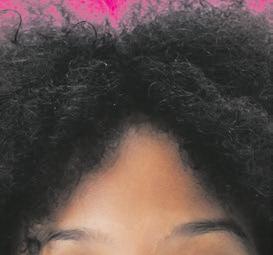





DID YOU KNOW?


TheAncientEgyptians believedthattheheart, andnotthebrain,was thesourceofthought and emotion.
















The parietal lobe registers temperature and other sensations such as touch and taste.
12 COMMON HUMAN DREAMS
1. Falling.
9. Being in school.
2. Being chased.
3. Being late for an exam.
4. Flying.
5. Being naked in public.
6. Having their teeth fall out.
Scientists are still trying to figure out why people dream. To do this, they use a machine to study electrical activity in the brain during sleep and dreaming. They know that the brain’s limbic system, which lies under the cerebrum and deals with emotions, is very active during dreams.
The occipital lobe is responsible for vision.


10. Getting lost.
11. Moving in slow motion.
12. Discovering a secret room.
7. Missing a bus, train or plane.
8. Meeting a famous person.















The cerebellum handles balance, movement and how our muscles work together.
The vertebrae protect the spinal cord.
RIGHT AND LEFT
The brain is split into two. Both halves, or hemispheres, contain similar structures, so they are almost mirror images of each other. The left hemisphere controls the right side of the body, while the right hemisphere controls the left side of the body.


A reflex action is when your body does something without you having to think about it. Reflexes protect your body from harm – for example, they automatically move your hand away from a hot flame. Reflex action quickly pulls your hand away from the heat even before the signal that is sent from your hand to your spinal cord arrives in your brain to let it know that you are in pain.
Sensory neurons send a message to the spinal cord that the ame is hot.
Relay neurons in the spinal cord send a message to the motor neurons, nerve cells that help control muscles. The hand pulls away. Hot ame.
WHAT IS A HEADACHE?
Although the brain collects pain signals from all over the rest of the body, it can’t feel pain itself –even if it is poked with a sharp object. So a headache isn’t caused by the brain itself hurting. The painful throbbing sensation is caused by blood vessels or soft tissues that surround the brain.
and




















































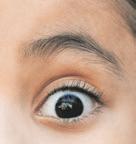


































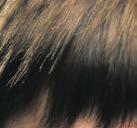








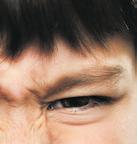















Let’s meet some of the wonders of the animal world – from animals that can snooze for hours to animals with an amazing ability to transform – in this special extract from Britannica’s brilliant EncyclopediaInfographica.
Infographics by Valentina
D’E lippo
All humans need to sleep – and it’s an important part of the lives of many other animals, too. However, as you can see here, some animals sleep very little, and others are champion snoozers! How about you? Do you sleep more like a dolphin or like a dog? Perhaps you prefer to t in a little nap like a gira e?
HOW TO READ IT
Each clock shows two circles that each represent 12 hours, and so add up to a 24-hour day. The pink portion shows the average time each animal sleeps per day.
Gira es sleep standing up for several ten-minute stints with their eyes barely closed. They sometimes lean against a tree or another gira e for support. GIRAFFE 40 minutes
Dolphins, like whales and other aquatic mammals, sleep di erently from humans. Instead of its whole brain going to sleep as ours does, one side of a dolphin’s brain gets some rest, while the other side keeps the dolphin semi-alert and breathing. Dolphins even sleep with one eye open!
Koalas eat more than a kilogram of leaves every day. All that eating and digesting requires a lot of energy, so they spend a long time sleeping to recover.
HUMAN SLEEP






Humans need di erent amounts of sleep at di erent stages of life. A new baby may sleep for as many as 16 hours a day, whereas a typical adult needs to sleep for only about 8 hours a day.

Chameleon

A chameleon can change the colour of its skin to regulate its body temperature (darker colours absorb more light and heat) and also to communicate with other chameleons.



Noone’sgoing to mess with me now!

Mutable rain frog
This rare frog, roughly the size of a ngernail, can change the texture of its skin from smooth to spiny in just a few minutes. Scientists think this change of appearance helps the frog to blend in with its surroundings.


Some creatures can dramatically change their appearance in order to help them to escape danger, become stealthier hunters, regulate their temperature, impress a male or female partner, or just communicate! The amazing chameleon seen below is one of the most famous transforming animals. But do you know the real reason why it changes colour?























sh Pu er sh can ll their stomachs with water and expand like a beach ball, more than doubling in size. The pu er sh suddenly pu s up in this way to deter predators from eating it.

























Arctic fox
Iampretending to be a sea snake.







I am the real sea snake!
The colour of the Arctic fox’s fur changes from a thin brown/grey coat in summer to a heavy white coat in the winter, so that it can blend in with its snowy winter habitat. This makes it a stealthy hunter, and harder for predators to spot.




Mimic octopus









This octopus can change its colour to conceal itself or impersonate other sea creatures – including lion sh, jelly sh and sea snakes – to fool potential predators. Pu
















Test your family’s brainpower by playing our fun, fact- lled quiz. Don’t worry if you don’t know all the answers, though – you can nd them at the bottom of this page. Good luck!
1 What type of animal is a killer whale, pictured right, which is also sometimes known as an orca?
a. A shark
b. A dolphin
c. A whale
d. A fish
2 Approximately how long does it take a sloth to digest a single leaf?
a. A day
b. A week
c. A month
d. Three months
3 What substance makes up around 95 per cent of a jellyfish’s body?
a. Muscle
b. Jelly
c. Rubber
d. Water
7 Ganymede, Europa, Enceladus and Titan are all types of what planetary body?
a. Comet
b. Moon
c. Asteroid
d. Dwarf planet
8 Whereabouts on your body would you find what is sometimes called your ‘anatomical snuffbox’?
a. On the soles of your feet
b. On the top of your head
c. On the back of your hand
d. On the back of your neck
9 Which ancient Greek mathematician and inventor is said to have had the first ‘Eureka!’ moment?
a. Plato
b. Ptolemy
c. Pythagorus
d. Archimedes
10 What is nomophobia a fear of?
a. Not having your mobile phone
b. Forgetting your own name
c. Something that you are unable to name
d. Garden gnomes

4 Which animal has the largest eyes?
a. A blue whale
b. A giant squid
c. A tarsier
d. An ostrich

a. 20 times
b. 50 times
c. 100 times



12 How many individual players are there in a rugby union team?
a. 10
b. 11
c. 15
d. 18
13
Who is estimated to be the biggest-selling solo musician of all time?
a. Taylor Swift
b. Michael Jackson
c. Elvis Presley
d. Madonna
14 In which video game might you meet King Boo, Yoshi, Lakitu and Birdo?
a. Pokémon
b. Super Mario
c. Pac-Man
d. Sonic the Hedgehog
15
Paul Slosar from the United States is the proud owner of the world’s longest moustache. How long is Paul’s record-breaking tache?
a. 23 cm
b. 43 cm
c. 63 cm
d. 83 cm

18 Approximately what percentage of the world’s total population of 8.1 billion people live in India?
a. 7%
b. 12%
c. 17%
d. 22%
19 In which English county would you find Sherwood Forest, said to be the home of the legendary Robin Hood?
a. Yorkshire
b. Nottinghamshire
c. Derbyshire
d. Northamptonshire
20 The national flag of which Asian country is shown on the left?
a. China
b. Sri Lanka
c. Malaysia
d. Bhutan
EMOJI FOOD
Each of the emoji sequences below represents something you can eat or drink. Can you work out what food or drink it is in each case?
5 Fleas are among the greatest athletes in the animal kingdom. How many times its own body length can a flea jump?
d. 200 times
6

What is a collective noun used to describe a group of ladybirds?
a. A loveliness
b. A swarm
c. A flutter
d. An army
11
UY Scuti is a giant star located near to the centre of our galaxy, the Milky Way. It is the largest star in the universe that has been discovered so far by astronomers. Approximately how many stars the size of our own Sun could you fit inside UY Scuti?
a. 5,000
b.
16
Which of these musical instruments was invented most recently?
a. Saxophone
b. Piano
c. Guitar
d. Violin
GEOGRAPHY
17
Which two countries share the longest land border?
a. USA and Canada
b. Argentina and Chile
c. Russia and Kazakhstan
d. China and Mongolia
Stumped? Don’t worry, you can nd the answers to all the puzzles at www.whatonearth.co.uk/puzzles
Can you nd the 12 wintry words hidden in our word search puzzle?
S
Can you spot all 2O di erences between these two festive illustrations?
Draw a line to connect each pair of planets. You can’t use diagonal lines and the lines can’t cross or touch each other. You must ll the whole grid with lines but only one line is allowed in each square.

Question: What goes ‘Oh, oh, oh’?
Answer: Santa Claus walking backwards!







